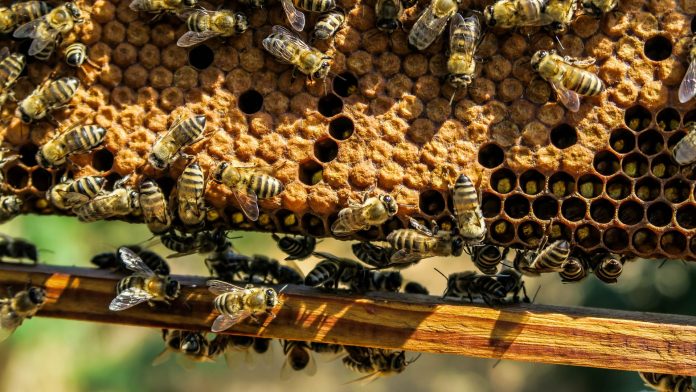
New research has discovered that looking at honeybees in a colony in the same way as neurons in a brain could help better understand the basic mechanisms of human behaviour.
The team of researchers at the University of Sheffield, UK, studied a theoretical model of how honeybees decide where to build their nest. Viewing the bee colony as a single superorganism which displays a co-ordinated response to external stimuli, similar to the human brain, led to a better understanding of human behaviour.
It was concluded that the way in which bees ‘speak’ with each other and make decisions is comparable to the way numerous individual neurons in the human brain interact with one another.
Following psychophysical laws
Previous research has shown that the human brain and other animals follow certain rules known as psychophysical laws. The whole brain obeys the laws, while the single neurons do not.
Similarly, this study found that even if single bees do not obey these laws, the superorganism, i.e. the bee colony, does.
The study, which has found that superorganisms may obey the same laws as the human brain, is important as it suggests that the mechanisms that generate such psychophysical laws are not only happening in brains as previously thought.
This discovery will aid scientists in better understanding the basic principles that generate such laws by studying superorganisms such as bee colonies, which is much simpler than watching brain neurons in action when a decision is being made.
Exploring brain laws
This study helps better understand and explore the numerous brain laws, including:
- Pieron’s Law – suggests the brain is quicker to make decisions when the two options to decide between are of high quality. The brain is slower when two options are of lower quality. When studying the bee colony, the researchers found that the honeybee colony is quicker to decide between two high-quality nest-sites compared to two low-quality nest-sites;
- Hick’s Law – finds the brain is slower to make decisions when the number of alternative options increases. The academics found that the bee colony was slower to make decisions when the number of alternative nest-sites increased; and
- Weber’s Law – finds that the brain is able to select the best quality option when there is a minimum difference between the qualities of the options. The bee colony model was found to follow the same linear relationship of the minimum quality difference between nest-sites and their average quality.
‘A better understanding of the human brain’
Dr Andreagiovanni Reina, research associate in collective robotics in the University of Sheffield’s Department of Computer Science, said: “This study is exciting because it suggests that honeybee colonies adhere to the same laws as the brain when making collective decisions.
“The study also supports the view of bee colonies as being similar to complete organisms or better still, superorganisms, composed of a large number of fully developed and autonomous individuals that interact with each other to bring forth a collective response.”
He concluded: “With this view in mind, parallels between bees in a colony and neurons in a brain can be traced, helping us to understand and identify the general mechanisms underlying psychophysics laws, which may ultimately lead to a better understanding of the human brain.”









